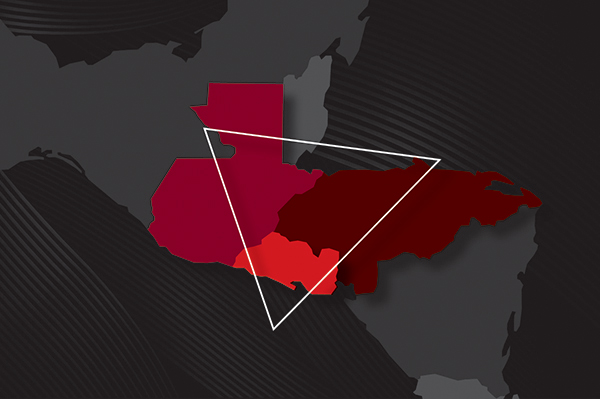
In El Salvador, 900 people were murdered in August—that is more than DC, Maryland and Virginia’s combined homicide rate for all of 2014—making it one of the bloodiest countries outside of a war zone.
By the end of 2015, El Salvador’s homicide rate reached even high levels, more than 100 murders per 100,000 residents, which is nearly 10 times greater than what is considered an “epidemic” by the U.S. Centers for Disease Control’s violence prevention team.
El Salvador’s murder epidemic has reached levels once seen with the HIV/AIDs infection in the United States in the 1980s or more recently with the Ebola outbreak in West Africa. When public health crises breaks out, the international community responds.
The murder rates in El Salvador and the neighboring countries of Honduras and Guatemala should be considered both a public health crisis and a threat to regional security—including the United States.
So far, efforts to reduce crime and violence have been directed at keeping youth from falling into criminal gangs, which is basically a “vaccination” campaign, and is essential to preventing this “disease” from spreading. These efforts have been successful and should be applauded.
Now, focus needs to be directed to the most hard-core offenders.
Only one-half percent of these law-breakers will actually commit acts of violence, according to research conducted by the United Nations Office on Drugs and Crime shows. Of this small number, only 10 to 20 percent will actually morph into “impact players,” those most likely to pull the trigger against another human being.
These individuals are predominantly male, ages 10 to 25 and are largely responsible for approximately 75 percent of the violence.
To date, the response has been to round up gang members, such as the infamous MS-13 and the 18th Street, and place them in prison, regardless of the type of crime. The prisons in the Northern Triangle countries of El Salvador, Honduras and Guatemala—which are 250 percent overcapacity—and have become major incubators for both MS-13 and 18th Street gangs.
“Mano dura” and “super mano dura” (iron fist and harder iron fist) come in various cycle when politicians reach the point of despair. Despite anti-gang laws and heavy-handed law enforcement and military-style tactics, mass incarceration strategies have hardly eroded the gang presence in the Northern Triangle during the past 25 years.
Only by using a triage approach that looks at that small group of individuals committing most of the violence do these communities stand a chance of eliminating this disease. Pilot programs in the region, such as in target communities in neighboring Honduras, have proven successful in reducing violent crime.
In the case of gang members who are looking to opt out or when a second chance will change their life’s trajectory, then resources should be directed to this population group. At the same time, we need to support those victims who also deserve a second chance at life.
Ultimately, incarceration may be required for those who are not candidates for second chance opportunities given their involvement in serious violent crimes.
This focus on the most serious offenders is not to diminish the efforts organizations, communities and government bodies have undertaken to work with youth who are at-risk of criminal behavior. Though less likely to fall into the violent categories, support to them is still needed and should not be sacrificed.
To end the bloodshed, we have to borrow James Carville’s phrase and adapt it to El Salvador: “It’s the murder rate, stupid.” Let’s focus on the core offenders.
Enrique Roig is the Director of Citizen Security at Creative Associates International, a Washington, D.C., development company. Previously, he served as Coordinator for the Central American Regional Security Initiative at the U.S. Agency for International Development.

